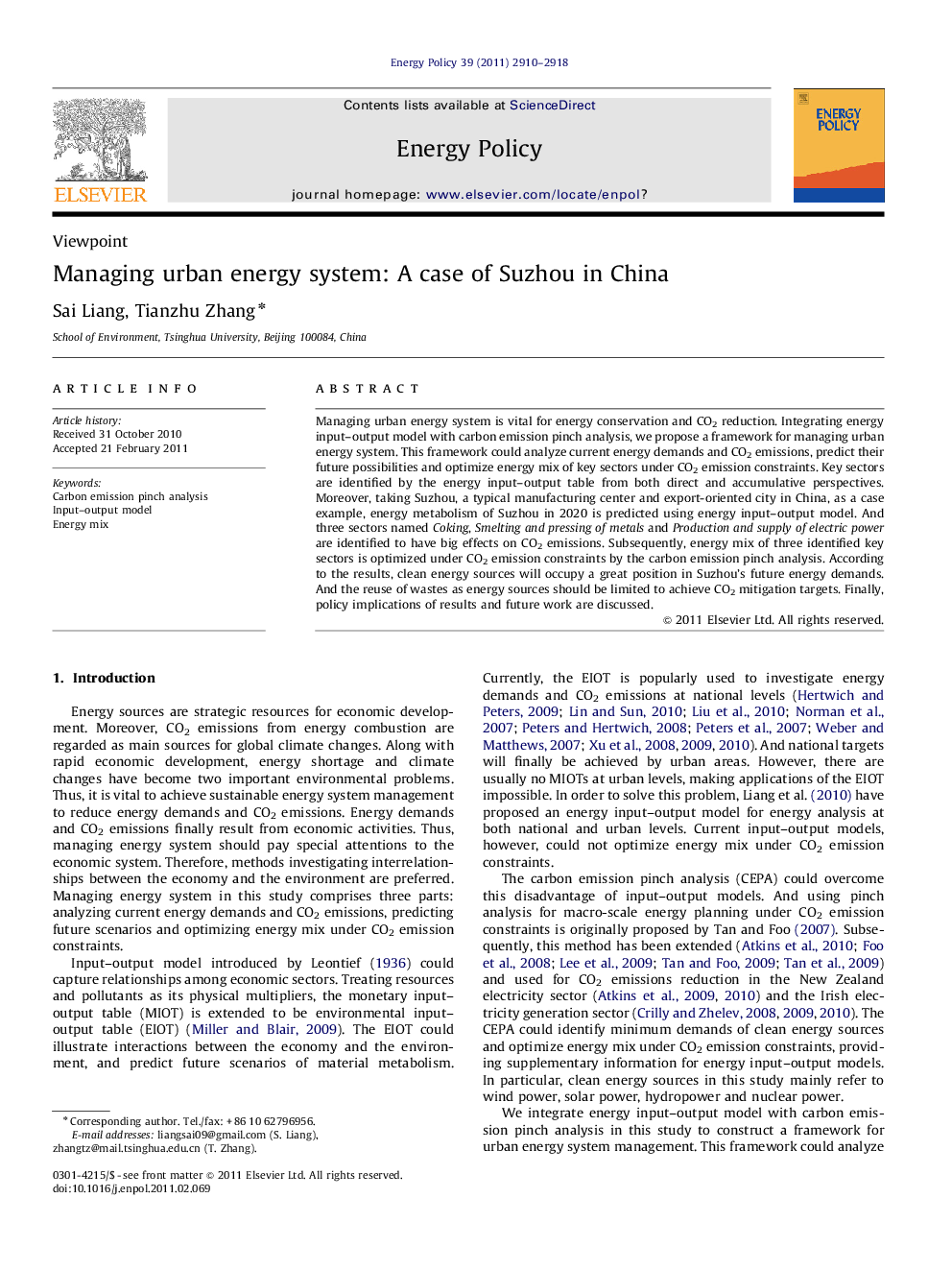| Article ID | Journal | Published Year | Pages | File Type |
|---|---|---|---|---|
| 995915 | Energy Policy | 2011 | 9 Pages |
Managing urban energy system is vital for energy conservation and CO2 reduction. Integrating energy input–output model with carbon emission pinch analysis, we propose a framework for managing urban energy system. This framework could analyze current energy demands and CO2 emissions, predict their future possibilities and optimize energy mix of key sectors under CO2 emission constraints. Key sectors are identified by the energy input–output table from both direct and accumulative perspectives. Moreover, taking Suzhou, a typical manufacturing center and export-oriented city in China, as a case example, energy metabolism of Suzhou in 2020 is predicted using energy input–output model. And three sectors named Coking, Smelting and pressing of metals and Production and supply of electric power are identified to have big effects on CO2 emissions. Subsequently, energy mix of three identified key sectors is optimized under CO2 emission constraints by the carbon emission pinch analysis. According to the results, clean energy sources will occupy a great position in Suzhou's future energy demands. And the reuse of wastes as energy sources should be limited to achieve CO2 mitigation targets. Finally, policy implications of results and future work are discussed.
Research highlights► We construct a framework for sustainable energy system management. ► We apply the framework in a typical manufacturing center named Suzhou in China. ► Key sectors for CO2 emissions are identified, and energy mix is optimized. ► Policy implications of results and future work are discussed.
